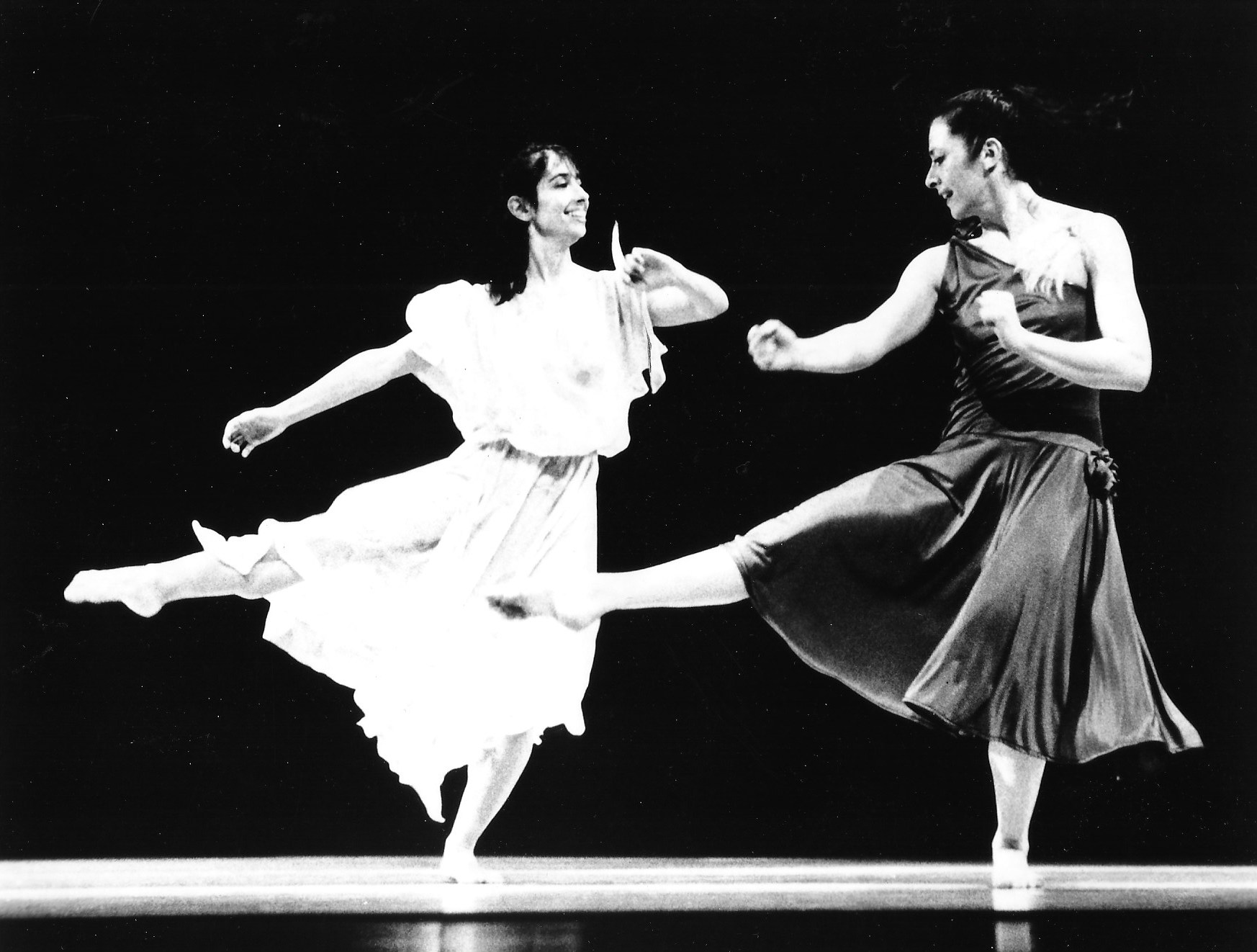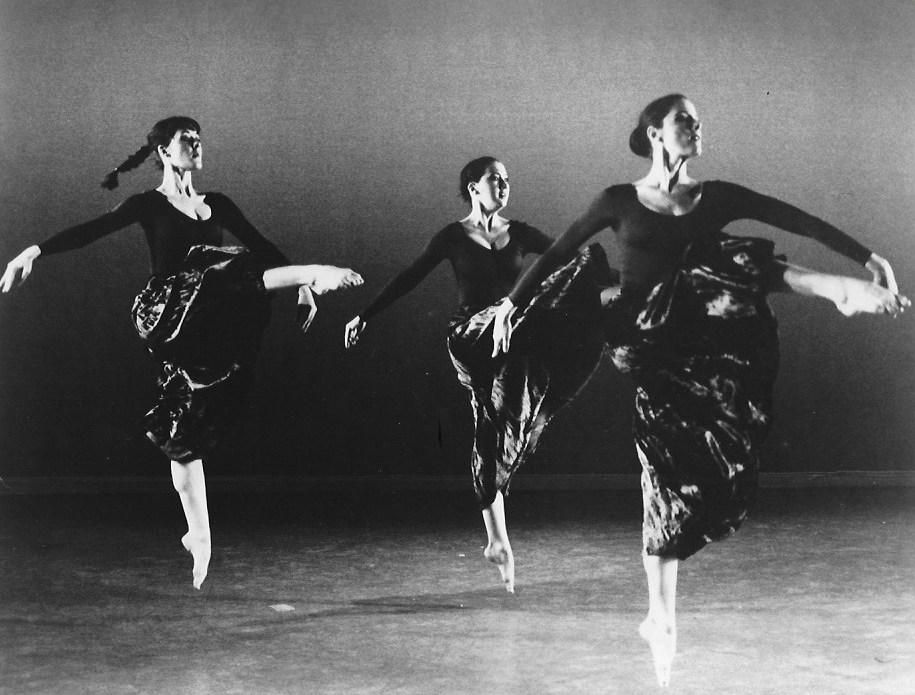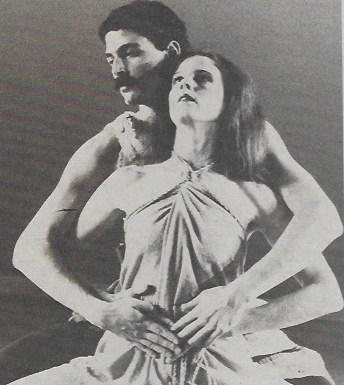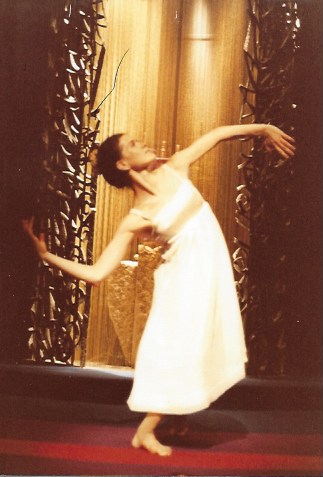As Avodah began to get more concert bookings I thought it would be fun to add some humor to our very serious repertory based on liturgy, biblical stories and Holocaust poetry. So in the spring of 1980 I added two new pieces inspired by weddings. One of those pieces, Three Brides and a Cow, inspired by French Painter Marc Chagall, was short-lived in the repertory. Both the music by Irving Fleet and my choreography were not up to their usual standards. The costumes, however, created by Tallahassee artist Stuart Riodan, were outstanding.
The second piece, Mother of the Bride, did work and stayed in the repertory for quite a few years. Our daughter Julie had had her Bat Mitzvah recently and that had influenced the piece as I saw how much planning can go into an event and how easy it could be to forget about the significance of the moment and in a frenzy just get caught up in all the details. So in Mother of the Bride I took things to the extreme, focusing on a mother taking on an extremely strong role.
A review in 1983 in the Montgomery, AL paper describes it wonderfully:
Mother of the Bride was a very funny piece with Ms. Mindlin as the harried mother trying to organize her daughter’s wedding. The other characters were Ms Behrendt as the bewildered bride standing in roller skates as activity swirled around her and Ms. Rodin as a bridesmaid. The mother literally rolled the bride off stage to her wedding after she had been dressed in her finery and a bouquet stuffed in her hands.
(Although the bride is on roller skates, she is stuck in one spot throughout the whole piece, unable to move independently, because her mother controls all the action.) The music was Purcell and the mother’s costume actually came from my own closet. A long party dress I had worn was altered to fit the various dancers who played the part of the mother! (Kezia, who often played the part of the mother, notes that when she was married and the organist asked if she wanted the familiar Purcell piece played at the ceremony, she shouted, “NO” and then had to explain her unusually strong reaction.)
A year later I added a piece I called Noshing to fun Klezmer music. It was all about eating and talking. There are quite a few different definitions for the Yiddish word to nosh. They range from eating food enthusiastically or greedily to having a snack between meals. A trio for three dancers, the piece opens with two dancers greeting each other in a rather catty way… looking each other up and down, with one dancer even checking the label in the other dancer’s dress. A third dancer joins them. Soon they are at a buffet table filling their plates with food. One dancer is attempting to resist the temptation of filling her plate with too much food. Three chairs are upstage center. The dancers soon sit down and then alternate between pantomiming eating and talking. These movements usually amuse the audience quite a bit.As Noshing continues we see two dancers busily having a “conversation” in dance highlighted by fancy footwork and then one dancer does a solo conveying a very gossipy tale. It’s a fun piece filled with more balletic steps than usual for me. I found two videos in my Avodah collection and it was great fun to watch a performance in Omaha, NE and another outdoor one in Great Neck, NY – two different casts both successfully and playfully

My apologies to Nancy – and Anita, below – as I can’t remember their last names and don’t seem to have any reviews or programs which help me.

In the fall of 1982, Rick Jacobs suggested doing a piece honoring three Jewish comedians: Woody Allen, Groucho Marx and Lenny Bruce. The choreography was mainly Rick’s, with some suggestions from me. The piece received a preview performance on our January tour to Alabama. In the Woody Allen section, a beautiful female dancer seated in a chair downstage right totally ignores his attempts to flirt. The dancer leaves and Rick pretends the chair becomes the “beautiful lady” and dances with the chair. As the section ends he is on the floor as the dancer returns and for the first time takes notice of him – on the floor, much to his dismay.
Abandoning a sweater and putting on a jacket and nose glasses Rick becomes Groucho. I particularly enjoyed this section with his bold Groucho strides. Soon a dancer portraying Mrs. Dumont enters. They dance together in a sarcastic way and at the end Rick carries her off much like a sack over his shoulder.
Luckily I had a video of these two sections done in a performance at a JCC in New Jersey which helped to refresh my memory. Alas I don’t have any video of the Lenny Bruce section and I don’t remember it performed very often.
With the rest of the repertory being so serious these three comedies added a new dimension and gave the audience a chance to laugh.
[print_link]






































